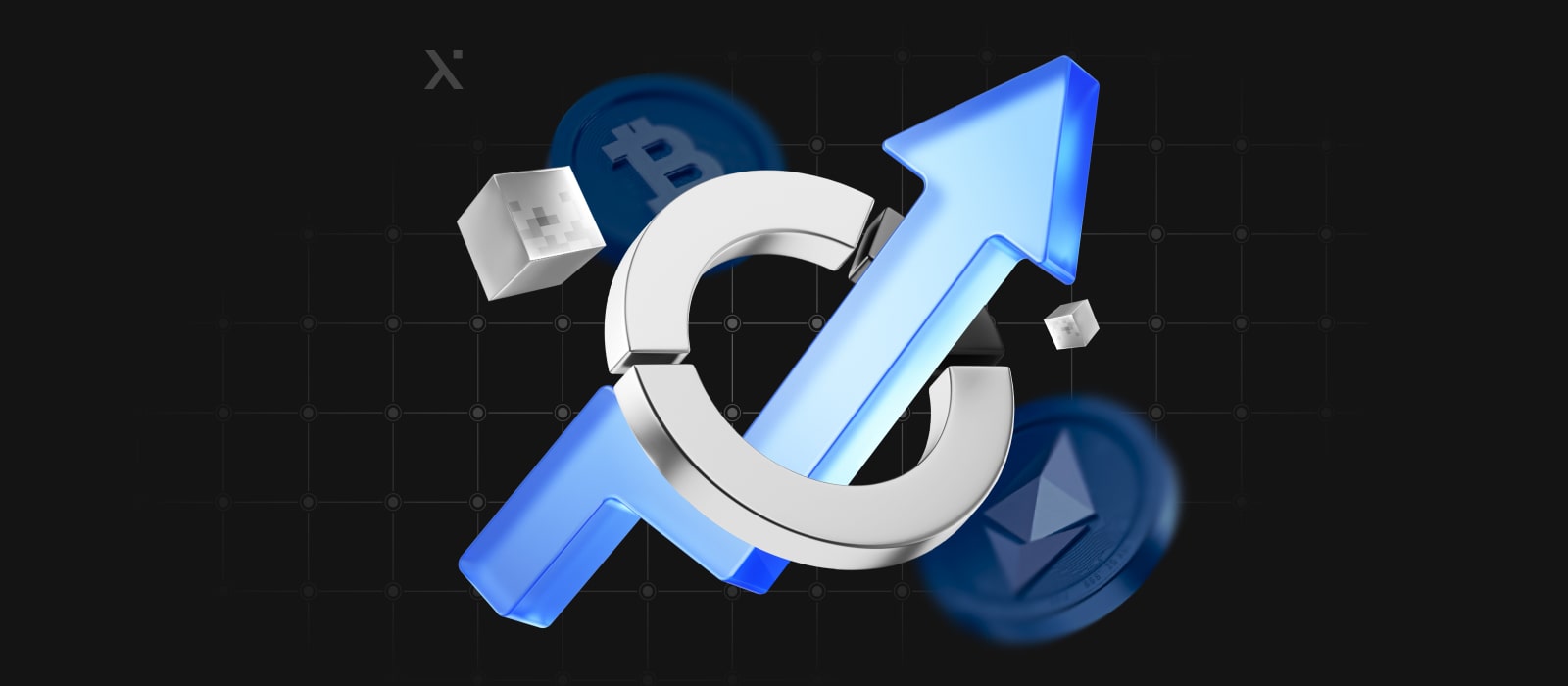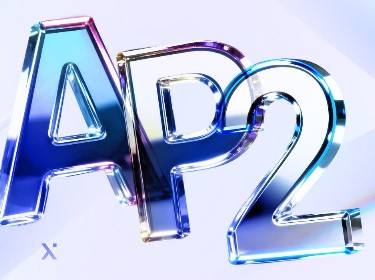You might already be utilizing blockchain for supply chain integrity, financial transactions, or novel customer engagement. But are you extracting the full strategic value embedded within that ledger data?
More and more businesses nowadays understand the foundational power of blockchain – its promise of transparency, immutability, and decentralized trust. However, beyond simply keeping records tamper-proof, blockchains generate a rich, continuous stream of data that, when properly analyzed, offers critical intelligence for navigating risks, optimizing blockchain-native operations, ensuring compliance, and identifying competitive opportunities in the market.
Mastering blockchain analysis is transitioning from a niche technical skill to a core business competency for organizations operating in or interacting with the blockchain space. As the blockchain technology market continues its exponential trajectory, with projections suggesting CAGR near 90% in the coming years, the ability to interpret on-chain data effectively will increasingly differentiate leaders from laggards.
Our PixelPlex team, including talented data science services specialists and blockchain consultants, collaborated on this article to help us explore how businesses can practically use advanced blockchain analysis and why it’s so important strategically. Keep reading for more insights!
What is blockchain analysis?
![]()
Blockchain analysis is the systematic process of examining on-chain data to understand network dynamics, participant behavior, asset flows, and smart contract interactions to inform strategic decisions. This involves leveraging specialized tools and data science techniques to filter, interpret, and visualize complex datasets generated by public or private ledgers.
Blockchain data analysis specifically refers to the methodologies used to monitor transaction patterns, assess protocol health metrics (like TVL fluctuations, governance participation, or validator performance), and manage portfolio or operational risk based on quantifiable on-chain evidence. It’s about converting the granular, often overwhelming, ledger data into actionable business intelligence that impacts the bottom line.
Whether operating on transparent public networks like Ethereum or permissioned consortium chains, the immutable and time-stamped nature of the data provides a unique foundation for evidence-based insights.
How blockchain analysis can benefit business
Why dedicate resources to analyzing blockchain data? The reasons are compelling and directly tied to business outcomes:
Proactive risk management
The digital asset space carries unique risks. Analysis helps mitigate these by:
Compliance enforcement: Automatically screening transactions against sanction lists and identifying high-risk counterparties to meet stringent AML/KYC regulations, thereby avoiding significant fines and reputational damage. The sheer volume of value, even if a small percentage, linked to illicit activities ($40.9 billion+ tracked in 2024, per Chainalysis) necessitates robust screening.
Counterparty due diligence: Assessing the on-chain history and risk profile of potential business partners, exchanges, or DeFi protocols before engaging with them.
Smart сontract security: While smart contract audits are crucial, ongoing analysis of smart contract interactions can reveal anomalies, potential exploits being tested, or unusual governance activities that might signal risks within DeFi protocols or dApps your business relies on.
Informed financial decisions
For organizations holding digital assets or investing in the space:
Market intelligence: Gaining insights into market sentiment, whale movements, exchange flows, and holder behavior patterns that traditional market data doesn’t reveal. Understanding metrics like MVRV (market value to realized value), RBAC (role-based access control) or SOPR (spent output profit ratio) can provide edges in timing market entries or exits.
DeFi strategy: Analyzing yield farming opportunities, assessing impermanent loss risks, monitoring liquidity pool health, and tracking competitor movements within the DeFi landscape.
Portfolio monitoring: Using on-chain data to get a real-time, transparent view of asset movements and valuations within a portfolio or treasury.
What is data analytics in insurance: insights into benefits and use cases
Operational optimization
For businesses using blockchain internally or in their value chain:
Supply chain visibility: Moving beyond simple tracking to analyzing bottlenecks, verifying compliance with handling standards (e.g., temperature controls logged on-chain), and optimizing logistics based on real-time, verifiable data.
Performance monitoring: For enterprise applications, analyzing network throughput, transaction finality times, and smart contract execution costs to ensure the blockchain solution is meeting performance KPIs and delivering expected ROI.
DApp user behavior analysis: Understanding how users interact with your decentralized application, identifying points of friction, and optimizing the user experience based on actual on-chain behavior.
Competitive analysis & market research
On-chain data provides a unique lens into ecosystem dynamics, revealing adoption trends for specific protocols or L2 solutions, capital flows between different market segments (e.g., NFTs vs. DeFi), and the strategies being employed by other major players in the space.
Types of blockchain analysis
Different business questions require different analytical approaches:
Blockchain transaction analysis
This digs into the specifics of asset movement. It’s not just about if a transaction happened, but why and what it means. For businesses, this means tracking payments, verifying the source of funds for compliance, analyzing the flow of assets into and out of specific DeFi protocols or exchanges to gauge sentiment, or understanding complex interactions involving multiple smart contracts.
Blockchain data analysis
This involves looking at aggregated metrics to understand the health, security, and economics of a blockchain or protocol. Businesses might analyze validator staking rewards to assess network security incentives, track gas fee fluctuations to understand network congestion impacts on their dApp’s usability, monitor active address growth to gauge user adoption, or analyze governance proposal voting patterns to anticipate protocol changes.
Blockchain forensic analysis
While often associated with law enforcement, businesses also utilize forensic techniques. This could involve investigating internal fraud involving corporate crypto wallets, conducting deep due diligence on the source of funds for large incoming transactions, tracing assets lost in security incidents, or supporting litigation related to blockchain transactions. It requires specialized transaction monitoring software capable of deanonymization attempts and navigating intervention techniques.
11 Key Data Analysis Methods and Techniques and Tips on Choosing the Right One
50 Key Big Data Statistics and the Must-Know Trends of 2025 and Beyond
Blockchain Database vs Traditional Database: Choosing the Best For Your Project
Top 10 tools for blockchain analytics
![]()
Accessing and interpreting blockchain data requires specialized platforms. Here are ten widely recognized blockchain analysis tools and blockchain analysis software solutions, each offering different strengths:
Chainalysis
Industry leader for compliance (AML/KYC), risk management, and investigation software, primarily serving financial institutions, government agencies, and crypto businesses. Helps organizations meet regulatory requirements and detect illicit activity.
Dune Analytics
Powerful and flexible platform allowing users with SQL skills to query raw blockchain data across numerous chains and build custom, shareable dashboards. Excellent for bespoke research and community insights.
Messari
Provides professional-grade market intelligence, in-depth research reports, data APIs, and screening tools, aimed at institutional investors, analysts, and enterprises needing comprehensive crypto asset information.
TRM Labs
Offers end-to-end crypto compliance and risk management solutions, including transaction monitoring, wallet screening, and investigative tools to help organizations detect and manage financial crime exposure.
AnChain.AI
Utilizes AI and machine learning to provide predictive intelligence for blockchain security, risk monitoring, and compliance, aiming to identify threats before they escalate.
Elliptic
Focuses on cryptoasset risk management, providing AML compliance, fraud detection, and forensic investigation capabilities for crypto businesses and financial institutions worldwide.
Coinpath
Specializes in providing APIs for tracing cryptocurrency transaction paths and analyzing fund flows, often integrated by developers into other applications or analytical workflows.
Parsiq
A real-time monitoring platform that allows users to create “smart triggers” – automated actions or alerts based on specific on-chain events, connecting blockchain data to business processes.
DeFi Llama
The essential data aggregator for the DeFi ecosystem. It provides comprehensive, free data on protocols, yields, bridges, and more across nearly all relevant chains.
Nansen AI
Combines on-chain data with a massive database of labeled wallets (exchanges, funds, influential traders) to provide actionable insights, particularly strong for tracking ‘smart money’ flows and analyzing NFT market dynamics.
Blockchain analysis use cases for business
The strategic application of blockchain analysis spans numerous sectors:
FinTech & DeFi
Beyond basic crypto trading, analysis is used for sophisticated risk modeling in DeFi lending protocols, assessing counterparty risk, optimizing liquidity provision strategies, ensuring robust AML/CFT compliance, identifying complex arbitrage opportunities across different venues, and understanding user retention within financial dApp development.
Supply chain & logistics
Analysis provides granular proof of provenance, verifies authenticity to combat counterfeiting (critical for pharma, electronics, luxury goods), monitors condition compliance (e.g., cold chain integrity), identifies bottlenecks causing delays, and provides auditable data for sustainability reporting. The potential ROI here contributes to the massive projected growth of the blockchain supply chain market.
Agriculture & food provenance
Specific blockchain in agriculture theme analysis involves scrutinizing farm-to-fork traceability data to build consumer trust, rapidly identifying sources during recalls, verifying certifications (organic, fair trade) through immutable records, analyzing sensor data (e.g., temperature, humidity) logged on-chain for quality assurance, and auditing the execution of smart contracts for automated insurance payouts or supplier payments.
Healthcare & pharma
Used for analyzing secure patient data sharing patterns (with consent frameworks), rigorously tracking pharmaceuticals through the supply chain via analysis of movement data to prevent counterfeits, and verifying healthcare provider credentials stored on-chain.
Energy & utilities
Analyzing data from blockchain-based renewable energy certificate tracking systems, improving transparency in wholesale energy trading markets through transaction pattern analysis, and potentially analyzing usage data for grid optimization in decentralized energy scenarios.
Legal industries
Financial institutions use analysis not just for AML, but also to assess the risk exposure of their clients who interact with digital assets, contributing to overall institutional risk management frameworks.
Digital identity verification
Blockchain analysis plays a role in auditing and verifying claims within decentralized identity management services and systems, ensuring the integrity of credential issuance and presentation processes.
Media & intellectual property
Analyzing content usage data recorded on-chain for automated and transparent royalty distribution, tracking the provenance and ownership history of digital assets (NFTs) to combat fraud and verify authenticity in digital marketplaces.
What Is Data Pipeline Architecture? Overview of the Best Practices and Tips on How to Build Your Own Data Pipeline
15 Best Big Data Analytics Tools and Platforms to Look out for in 2025
Challenges in implementing blockchain analytics
![]()
Leveraging blockchain analysis effectively isn’t without its hurdles:
Privacy regulations
Balancing analytical needs with GDPR, CCPA, and other privacy regulations is complex. Furthermore, the increasing sophistication of privacy-enhancing technologies (like ZK-proofs and advanced mixers) requires equally sophisticated analytical countermeasures or privacy-preserving analysis techniques, which are still evolving.
Infrastructure costs
Popular blockchains generate terabytes of data. Storing, indexing, and querying this data efficiently requires significant investment in infrastructure and specialized databases, impacting the cost-effectiveness of in-house analysis efforts.
Interoperability gaps
Analyzing user activity or asset flows that span multiple blockchains (e.g., moving assets from Ethereum via a bridge to Polygon and then to Solana) remains technically challenging due to differing standards and the complexity of tracking across bridges and L2s. Building a unified view is often difficult.
Smart contract complexity
Understanding the intent and potential vulnerabilities of complex smart contracts requires not just data analysis but also expertise in smart contract development and security auditing. Raw interaction data can be misleading without this context.
Data accuracy & node reliance
The accuracy of analysis depends on the reliability of the data sources, typically blockchain nodes. Ensuring access to reliable, synchronized nodes, especially for less common chains, can be an operational challenge.
Dynamic environment
The rapid pace of innovation means new tokens, protocols, and transaction types emerge constantly. Analysis tools and methodologies must continuously adapt to remain relevant and effective.
Data analytics in risk management: top benefits, applications, and tips from our specialists
The field is rapidly evolving. We anticipate increased integration of AI and machine learning for more sophisticated pattern recognition, anomaly detection, and predictive analytics (e.g., forecasting market movements or identifying potential security threats earlier).
Simultaneously, research into privacy-preserving analytics, potentially using zero-knowledge proofs, will be crucial for balancing insights with confidentiality. As institutional adoption grows and the regulatory landscape matures, the demand for auditable, enterprise-grade analysis solutions focused on compliance, risk management, and financial reporting will intensify.
Conclusion
Blockchain analysis has matured significantly, moving beyond simple transaction lookups to become a strategic imperative for businesses. It offers unparalleled transparency into digital asset flows and network operations, enabling organizations to manage risk proactively, make data-driven investment and operational decisions. While challenges around privacy, data volume, and cross-chain complexity exist, the value derived from effective analysis is undeniable.
Processing these insights, however, often requires a blend of sophisticated tools and deep expertise spanning analysis, blockchain development, and system integration. Partnering with specialists who possess this holistic understanding can be key.
PixelPlex combines proficiency in blockchain development and data analytics services, empowering organizations to translate complex on-chain data into actionable strategies and tangible business outcomes.
If you have a project idea in mind, we’d be glad to hear from you! Contact our consultants to start your endeavor with professionals.
FAQ
Blockchain analysis is the process of examining data on blockchains to gain business intelligence. It helps organizations make smarter decisions, manage risks effectively, and optimize operations related to digital assets or blockchain technology.
Analysis tools track transactions and screen involved parties against watchlists, assisting businesses in meeting Anti-Money Laundering (AML) and Know Your Customer (KYC) regulations. This helps mitigate compliance risks, avoid potential fines, and assess counterparty trustworthiness.
Yes, generally specialized tools and platforms (like Chainalysis, Dune Analytics, TRM Labs, or Nansen AI) are necessary to process the vast amounts of on-chain data, interpret complex patterns, and generate actionable insights efficiently.
Not always, extracting maximum value often requires expertise beyond just using the tools. Understanding how to integrate findings with existing systems and having blockchain development knowledge to build or modify solutions based on the analysis is frequently key, highlighting the need for experienced partners.
There is tension. While analysis increases transparency vital for data security and compliance, it can impact pseudonymity. Businesses must carefully balance analytical needs with privacy considerations and regulations, sometimes exploring emerging privacy-preserving techniques.
Common hurdles include managing and processing the sheer volume of data generated by blockchains, the complexity of tracking activities across different, non-connected chains (cross-chain analysis), and keeping up with the rapid pace of technological evolution in the space.




